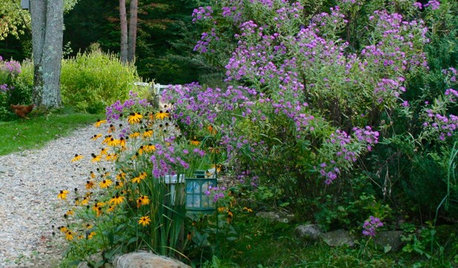serviceberry/juneberry
both
18 years ago
Related Stories

TREESGreat Design Plant: Downy Serviceberry
Plant this sculptural tree in fall or spring for year-round interest and graceful beauty
Full Story
GARDENING GUIDESGreat Design Plant: Amelanchier Signals Spring With Airy White Blooms
With roughly 20 species of serviceberry native to the U.S., bees can feed on the early-season blooms while birds enjoy the summer berries
Full Story
SPRING GARDENING7 Spectacular and Practical Spring-Flowering Trees
Put on a beauteous show in the garden with a landscape tree awash in flowers — just do your homework first
Full Story
GARDENING GUIDESTop 10 Native Plants for the Northeast
For a low-maintenance, wildlife-friendly landscape, use native plants adapted to the climate and range of soils in the Northeast
Full Story
GARDENING AND LANDSCAPINGCrazy for Fruit Trees
Whether a single citrus or a mini apple orchard, even the smallest landscape space can bear deliriously delicious fruit
Full StorySponsored
More Discussions







tinamcg
bothOriginal Author
Related Professionals
Benbrook Landscape Architects & Landscape Designers · Bethlehem Landscape Contractors · Tempe Landscape Contractors · Boca Raton Landscape Contractors · Fort Hunt Landscape Contractors · Lake Saint Louis Landscape Contractors · Lake Zurich Landscape Contractors · North Haven Landscape Contractors · Palatine Landscape Contractors · Pleasant Grove Landscape Contractors · Tamarac Landscape Contractors · Vineyard Landscape Contractors · West Haverstraw Landscape Contractors · Cincinnati Driveway Installation & Maintenance · Grand Rapids Driveway Installation & Maintenanceterryr
lindy47
bothOriginal Author
Mozart2